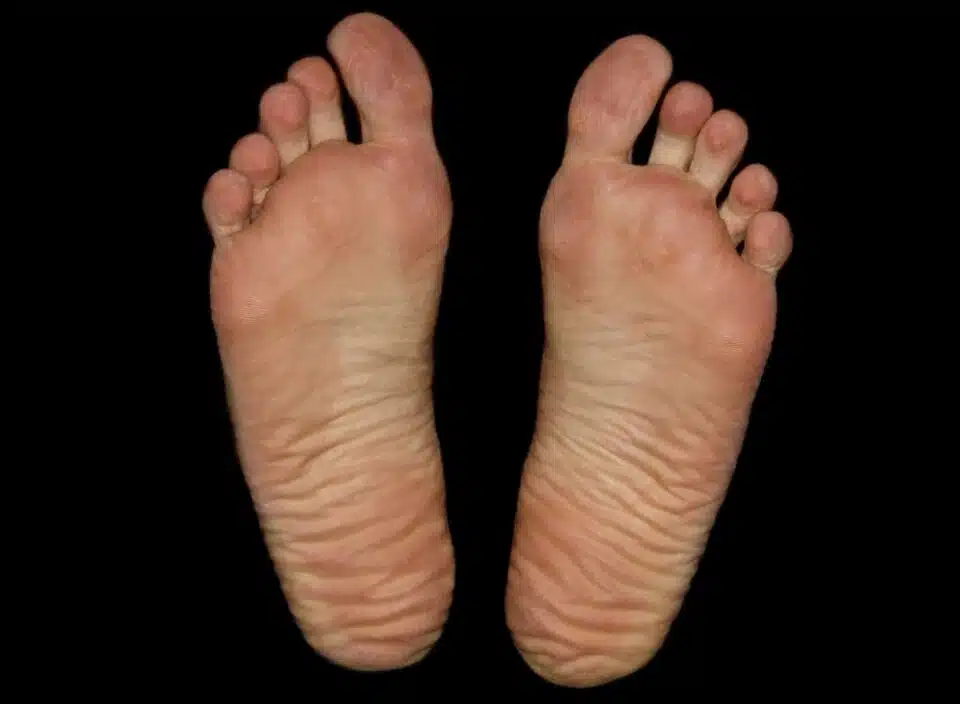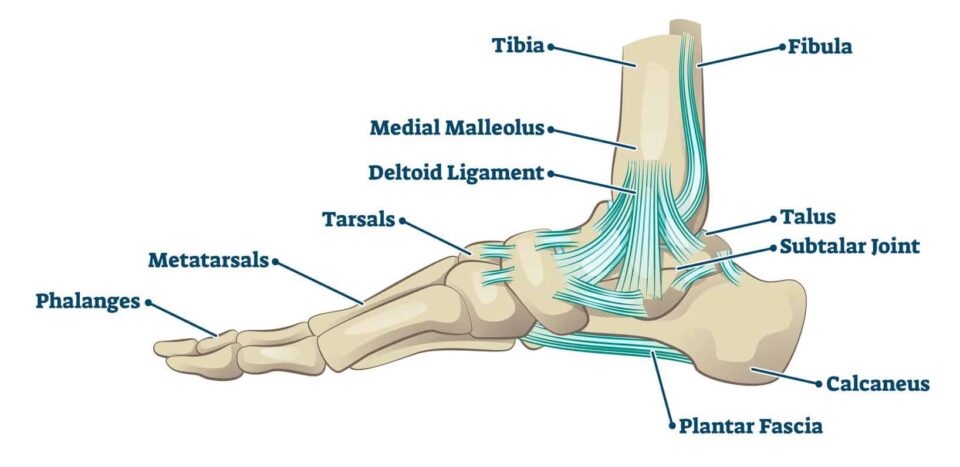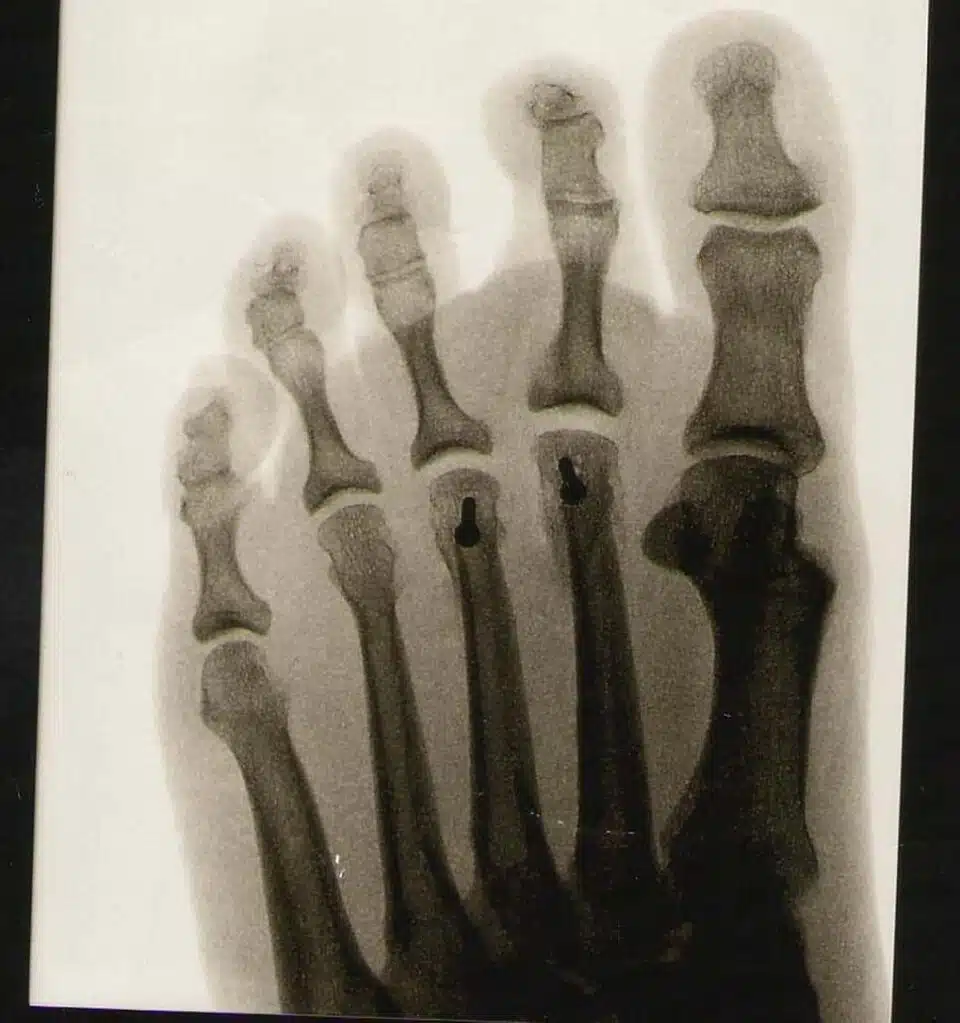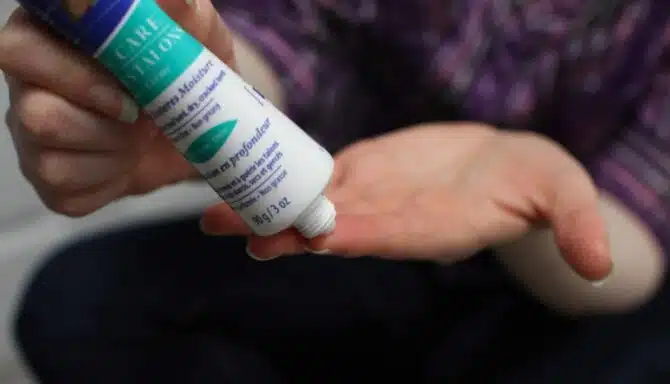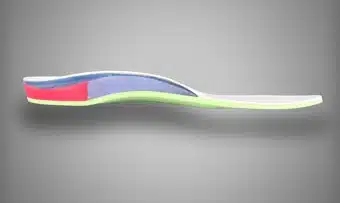Your plantar plate plays a critical part in the anatomy and makeup of our feet. The plantar connects your feet with the joints in your toes.
Given the constant wear and tear of your feet, the joints and muscles can often become overworked or strained. The plantar plate is particularly susceptible to injury because of its location on the foot. This also makes it especially vulnerable to several other foot conditions. For example, having bunions or a hammer toe may increase the risk of a plantar plate tear.
But worry not. In this article, learn more about the plantar plate as a body part, plantar plate tear symptoms, causes, and treatment methods for the foot condition.
First, let’s explore the physiology of the plantar plate itself.
What’s your plantar plate?
The plantar plate is rigid fibrocartilage (a dense, whitish tissue with a distinct fibrous texture) which connects the phalanges to the metatarsal head. In other words, the plantar plate joins the toes (phalanx bones) with the forefoot (metatarsal bones). As the mediator, the plantar plate stabilizes the toes and prevents them from shifting side-to-side or overextending.
Next, let’s look at the why of plantar plate tears.
Plantar plate tear: Causes
Overloading the metatarsophalangeal (MPJ) joint is the most common cause of plantar plate issues. Overloading the MPJ leads to strains and tears. The result? Pain and instability of the plantar plate.
In most cases, plantar plate damage occurs incrementally over time. However, you can acutely injure the plantar plate.
See below for a comprehensive list of plantar plate tear causes:
- Bunions: Bunions – a deformity affecting the joint that connects the big toe to the foot – put pressure on the plantar plate by forcing the big toe to push against the 2nd toe.
- Biomechanical abnormalities (metatarsal length): If your 2nd metatarsal is longer than your 1st (which it often is), you’re at a greater risk of a plantar plate tear at that site. You’re at a greater risk of this tear at the site because your 2nd metatarsal bears more weight than the “big” toe (1st metatarsal) when it’s longer.
- Biomechanical abnormalities (overpronation): When you overpronate, your foot bears much impact when running or walking. Typically, flat feet are a leading contributor to overpronation.
- Cortisone injection: Cortisone shots can have the side effect of thinning and weakening the plantar plate ligament.
- Specific activities/sports: Sports or movements that put excessive pressure on the toes and ball of the foot increase your chances of developing a plantar plate tear. Be cautious when dancing, running, jumping, or climbing stairs, especially if the balls of the foot are regularly sore or sensitive.
- Hammertoes: A hammertoe deformity occurs when the toe’s middle joint bends abnormally a toe deformity in which the middle joint in the toe bends abnormally.
In the next section, you’ll learn how to recognize plantar plate tears.
Symptoms
Wonder what are the signs of a plantar plate tear? Well, look out for these symptoms commonly associated with plantar plate tears:
- Toe alignment changes: The toe changing position, which occurs gradually as the tear increases, usually to the side or upwards
- Pain: Discomfort usually stems from the ball of the foot, either as severe pain or a dull ache. If you find you’re walking with very little cushioning under your toes, it may be because of a plantar plate tear.
- Swelling: You may notice swelling underneath the ball of the foot extending between the start and end of one of the multiple toes.
Plantar plate tear: Diagnosis
You have a few options in terms of diagnosis:
- Treat the pain yourself if it’s not severe and the discomfort has just begun
- X-rays
- MRIs
Finally, in the last section, you’ll learn more about how to treat plantar plate tears.
Plantar plate tear: Treatment
Pinpointing a plantar plate tear as the source of discomfort can be challenging. The foot is a complex network of muscles, tendons, and bones that are so intertwined that isolating the condition can be difficult. However, it’s not a hopeless task.
Several DIY treatment methods exist for mild symptoms, as well as options for severe cases of plantar plate tears.
Visit a chiropodist
Our team of dedicated licensed chiropodists is committed to providing quality care and services for all your foot and ankle needs. They can diagnose, treat and help manage various foot conditions, from callus removal to ingrown toenails to bunions.
RICE (Rest, Icing, Compression, and Elevation)
The RICE method is a universal treatment for many foot conditions, including plantar plate tears. The RICE method, when combined, helps relieve pain, reduces inflammation, keeps swelling at bay, and allows for ample recovery for your muscles, tendons, and in this case, for your plantar plate.
Taping
Taping, the wrapping of a joint for added stability, can help hold your toes in position. Stabilizing the joint with tape can help correct any worsening abnormalities associated with plantar plate tears. It also prevents your toes from moving too far side-to-side, which can help encourage plantar healing and to avoid re-aggravation. A chiropodist can perform splinting, bracing, or taping for you.
Orthotics
Orthotics are a treatment method for the underlying causes of plantar plate tears. Custom foot orthotics are effective for bunions, hammertoes, and flat feet. You can also use shoe inserts with hardened plastic under particular toes for extra support.
NSAIDs
Anti-inflammatories like ibuprofen or Advil can combat pain associated with plantar plate tears.
Surgery
Surgery is a last resort option for plantar tears. There are two standard surgical procedures for plantar tears. The hat-trick procedure helps realign the metatarsal bone, while other surgeries are available for associated conditions like hammertoes, bunions, or other ancillary operations to balance the toe.
